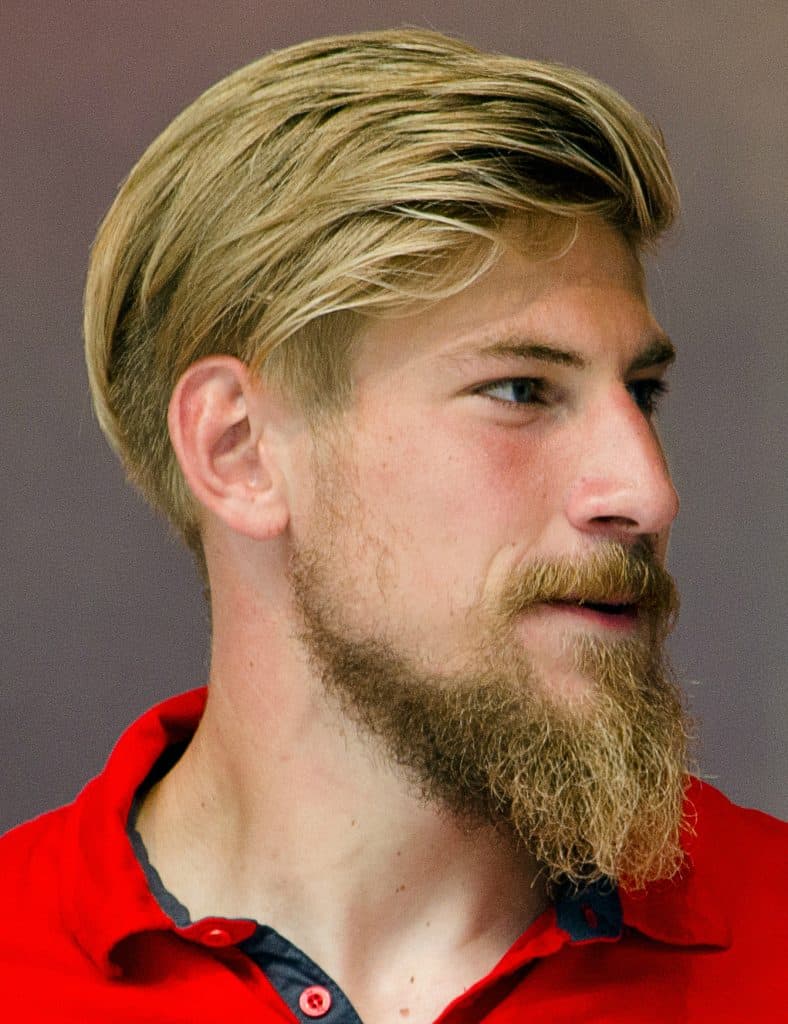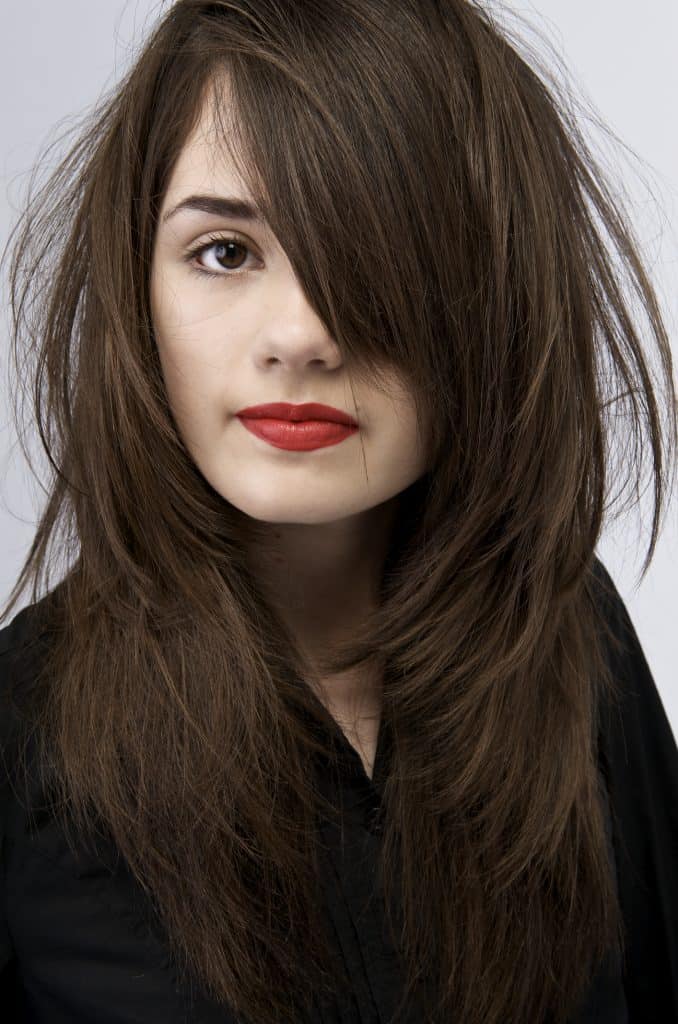Hair is one of the most defining features of human identity, and the rarest hair type has always fascinated people around the world. While many people have heard about common hair types like straight, wavy, or curly, there is a unique category that stands out due to its scarcity and distinct characteristics. Understanding the rarest hair type can offer valuable insights into human genetics, beauty standards, and cultural diversity.
From historical references to modern-day science, the concept of rare hair types continues to intrigue scientists, stylists, and individuals alike. This article aims to provide a comprehensive exploration of the rarest hair type, covering everything from its biological origins to its cultural significance. By the end, you'll have a deeper appreciation for this unique trait that sets certain individuals apart.
Whether you're curious about your own hair type or simply fascinated by the diversity of human characteristics, this article will guide you through the fascinating world of rare hair types. Let's dive in and explore what makes this hair type so special and how it contributes to the beauty of diversity.
Read also:Whoopi Goldbergs Wealth Exploring The Iconic Stars Financial Empire
Table of Contents
- What is the Rarest Hair Type?
- Biological Factors Behind Rare Hair Types
- Genetics and Heritability of Rare Hair
- Hair Texture Variations: Understanding the Spectrum
- Cultural Significance of Rare Hair Types
- Exploring the Rarest Hair Colors
- Hair Care Tips for Rare Hair Types
- Famous People with Rare Hair Types
- Myths and Facts About Rare Hair Types
- Conclusion: Celebrating the Beauty of Diversity
What is the Rarest Hair Type?
The rarest hair type is often classified as Type 4C, a subtype of tightly coiled, kinky hair that is predominantly found in individuals of African descent. This hair type is characterized by its tight curls, low density, and high shrinkage. Unlike other hair types, Type 4C is unique due to its zigzag pattern, which makes it distinct from the more common S-shaped curls. This hair type is not only rare but also requires specialized care to maintain its health and appearance.
Defining Characteristics of Type 4C Hair
Here are some defining features of Type 4C hair:
- Tightly coiled curls with a zigzag pattern
- Low density and porosity
- High shrinkage, making it appear shorter than its actual length
- Prone to dryness and breakage due to its texture
Understanding these characteristics is essential for individuals with this hair type to ensure proper care and styling. The rarity of Type 4C hair lies not only in its texture but also in its cultural significance and the challenges it presents in terms of maintenance.
Biological Factors Behind Rare Hair Types
The biological factors that contribute to the development of rare hair types are rooted in genetics, environmental influences, and evolutionary adaptations. Hair texture is determined by the shape of the hair follicle, which varies from person to person. A round follicle produces straight hair, while an oval-shaped follicle results in wavy or curly hair. Type 4C hair, with its unique zigzag pattern, is produced by a follicle with a highly irregular shape.
How Genetics Influence Hair Texture
Genetics play a crucial role in determining hair type. Studies have shown that multiple genes are involved in the development of hair texture, including the EDAR gene, which is associated with thicker and straighter hair in East Asian populations, and the TRHR gene, which influences curly hair in European populations. The combination of these genetic factors can result in rare hair types like Type 4C.
Environmental factors such as climate, diet, and lifestyle can also impact hair texture. For example, individuals living in humid climates may experience more frizz and curl definition, while those in dry climates may struggle with dryness and brittleness.
Read also:Unveiling The Power Of Desi49com Your Ultimate Guide To Success
Genetics and Heritability of Rare Hair
The heritability of rare hair types is a fascinating area of study. Research has shown that hair texture is influenced by a combination of dominant and recessive genes, making it difficult to predict the exact hair type a child will inherit. In some cases, rare hair types can skip generations, reappearing in descendants due to genetic mutations or recessive traits.
The Role of Genetic Mutations
Genetic mutations can lead to the development of rare hair types. For example, the FOXL2 gene mutation has been linked to the development of premature graying and unusual hair textures. These mutations can result in hair types that are not commonly seen in the general population, adding to the diversity of human characteristics.
Understanding the genetic basis of rare hair types can help scientists develop targeted treatments and products for individuals with these unique traits. It also highlights the importance of embracing genetic diversity and celebrating the uniqueness of each individual.
Hair Texture Variations: Understanding the Spectrum
Hair texture exists on a spectrum, ranging from straight to wavy to curly to kinky. Each type has its own set of characteristics and care requirements. While Type 4C is considered the rarest hair type, other variations such as Type 3C (tight curls) and Type 2C (loose waves) also present unique challenges and opportunities for styling and maintenance.
Classifying Hair Types
The Andre Walker Hair Typing System is widely used to classify hair types based on texture and curl pattern. Here's a breakdown of the system:
- Type 1: Straight hair with no curl pattern
- Type 2: Wavy hair with loose S-shaped curls
- Type 3: Curly hair with defined S-shaped curls
- Type 4: Kinky hair with tight curls and a zigzag pattern
Understanding your hair type is the first step toward finding the right products and techniques to enhance its natural beauty.
Cultural Significance of Rare Hair Types
Rare hair types have played a significant role in various cultures throughout history. In many African and African diaspora communities, Type 4C hair is celebrated as a symbol of identity, resilience, and beauty. However, it has also faced stigma and discrimination due to Eurocentric beauty standards that prioritize straight hair.
The Natural Hair Movement
The Natural Hair Movement, which gained momentum in the early 2000s, has been instrumental in promoting the acceptance and celebration of rare hair types. This movement encourages individuals to embrace their natural hair texture and reject societal pressures to conform to mainstream beauty standards. As a result, more people are recognizing the beauty and uniqueness of rare hair types like Type 4C.
Media representation has also played a crucial role in changing perceptions of rare hair types. Celebrities and influencers with rare hair types are using their platforms to promote diversity and inclusivity in the beauty industry.
Exploring the Rarest Hair Colors
In addition to rare hair types, there are also rare hair colors that add to the diversity of human characteristics. Natural red hair, for example, is one of the rarest hair colors, occurring in only 1-2% of the global population. This color is caused by a mutation in the MC1R gene, which affects the production of melanin in the hair.
Other Rare Hair Colors
Here are some other rare hair colors that exist in nature:
- Platinum blonde: A light, almost white shade of blonde hair that is rare in adults
- Vivid black: A deep, jet-black hair color that is more common in certain Asian populations
- Reddish-brown: A unique blend of red and brown tones that is often seen in individuals of mixed heritage
These rare hair colors, like rare hair types, add to the beauty and diversity of human characteristics and deserve recognition and celebration.
Hair Care Tips for Rare Hair Types
Caring for rare hair types like Type 4C requires a specialized approach to ensure its health and vitality. Here are some tips for maintaining and styling rare hair types:
Moisture is Key
Due to its tightly coiled texture, Type 4C hair is prone to dryness and breakage. To combat this, it's important to use moisturizing products that hydrate the hair and scalp. Look for products containing natural oils like coconut oil, shea butter, and jojoba oil, which penetrate the hair shaft and provide long-lasting hydration.
Protective Styling
Protective styling is an excellent way to reduce manipulation and prevent breakage. Styles like braids, twists, and buns can help keep the hair healthy and strong while promoting length retention. Be sure to use gentle styling techniques and avoid tight styles that can cause tension on the scalp.
Regular trims and deep conditioning treatments are also essential for maintaining the health of rare hair types. These practices help remove split ends and keep the hair strong and vibrant.
Famous People with Rare Hair Types
Several famous individuals are known for their rare hair types, using their unique traits to inspire others and promote diversity in the beauty industry. Here are a few notable examples:
Biography and Biodata
| Name | Hair Type | Occupation | Country |
|---|---|---|---|
| Viola Davis | Type 4C | Actress | United States |
| Lupita Nyong'o | Type 4C | Actress | Kenya/United States |
| Issa Rae | Type 4C | Actress/Producer | United States |
These celebrities have used their platforms to promote the acceptance and celebration of rare hair types, inspiring millions of people around the world to embrace their natural beauty.
Myths and Facts About Rare Hair Types
There are many myths and misconceptions surrounding rare hair types. Separating fact from fiction is essential for understanding and caring for these unique traits.
Common Myths
- Myth: Rare hair types are difficult to style.
- Fact: With the right products and techniques, rare hair types can be styled in a variety of ways.
- Myth: Rare hair types are unhealthy.
- Fact: Rare hair types are simply unique and require specialized care to maintain their health and appearance.
By dispelling these myths, we can promote a more inclusive and accepting view of rare hair types and their beauty.
Conclusion: Celebrating the Beauty of Diversity
In conclusion, the rarest hair type, Type 4C, is a fascinating and unique trait that adds to the diversity of human characteristics. From its biological origins to its cultural significance, this hair type deserves recognition and celebration. By understanding the factors that contribute to rare hair types and embracing their beauty, we can promote inclusivity and acceptance in the beauty industry and beyond.
We invite you to share your thoughts and experiences with rare hair types in the comments below. If you found this article helpful, please consider sharing it with others who may benefit from the information. And don't forget to explore our other articles on beauty, health, and lifestyle topics to stay informed and inspired.

